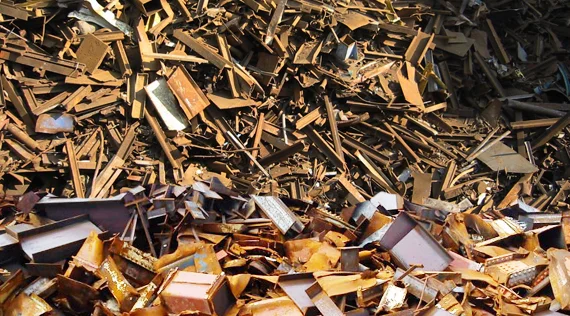€2.15 billion: Study calculates potential profitability of e-waste in circular economy
E-waste Recycling | 2015-11-13 19:54:54
The current potential revenue that could be achieved, were generated waste volumes to correspond with collected and recovered volumes, equate to €2.15 billion in Europe alone.
CANTERBURY (Scrap Monster): An economic analysis of 14 common categories of waste electric and electronic equipment (WEEE) has highlighted the economic value of bringing e-waste streams into the circular economy. The overall worth is calculated as €2.15 billion to European markets, with a potential rise to €3.67 billion as volumes increase.
WEEE represents the widest source of waste in the world. Every year, approximately 30–50 million tons of WEEE is disposed of globally, and this number is rising by an estimated 3–5 per cent annually. The recovery of expensive and scarce resources such as precious metals and critical materials from these products therefore represents a significant economic opportunity. However, current recycling technologies and business models have limited ability to recover these resources, and associated recovery rates remain relatively low.
To support economically advantageous management of e-waste streams in the future, a group of European researchers carried out an economic assessment of the recovery of materials from 14 common e-product categories: liquid crystal display (LCD) notebooks, TVs and monitors; light emitting diode (LED) notebooks, TVs and monitors; cathode ray tube (CRT) TVs and monitors; mobile phones; smart phones; photovoltaic panels; hard disk drives; solid state disks; and tablets.
Potential revenue evaluated
For each category of e-product, materials composition in grams per product unit was defined. The per kg average recovery values for each of the 41 materials were then calculated using data obtained over the March to August 2014 period from websites dedicated to diffusing raw materials prices. The researchers then evaluated the potential revenue for each of these e-waste categories in terms of €/product unit and €/kg of product.
Next, the team calculated the total potential revenue of each category. The researchers developed two scenarios based on literature data and market reports: the ‘AS IS’ case, which accounts for 2014 generated waste volumes, and ‘TO BE’ case, which relates to 2020 estimates.
€2.15 to €3.67 billion
They found that the current potential revenue that could be achieved, were generated waste volumes to correspond with collected and recovered volumes, equate to €2.15 billion in Europe alone, with smart phones, mobile phones, CRT monitors, and LCD notebooks and TVs representing the waste streams with the greatest economic recovery value. In the future (the ‘TO BE’ scenario), the researchers predict that the total recovery value of the 14 e-product categories will rise to €3.67 billion, with smart phones, LED monitors and TVs, and LCD monitors and TVs becoming the most valuable waste streams.
Notably, it was found that the value of gold in WEEE is so high that it influences half of all economic recovery potential. However, even materials of low economic value could generate significant revenue when available in high quantities; for example, plastics were found to constitute 9.2% of total economic recovery potential.
The authors state that this economic analysis highlights the potential profitability of recycling products that currently end up in landfills, causing economic and environmental damage. As such, this analysis offers a practical contribution to the European Union’s ongoing efforts to develop a circular economy based on the exploitation of resources recovered from WEEE.
Courtesy: http://recyclingportal.eu
 By
By 